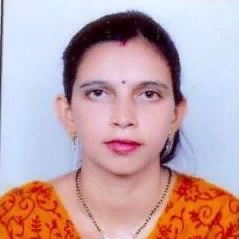
Poonam Sharma
Work place: Department of Computer science & Engineering, M.I.T.S., Gwalior, India
E-mail: enggpoonam@yahoo.com
Website:
Research Interests: Mathematics of Computing, Computing Platform, Image Processing, Pattern Recognition
Biography
Poonam Sharma is presently Assistant Professor in computer science and engineering department at Madhav Institute of Technology & Science, Gwalior, India. She has got PhD degree from Maulana Azad National Institute of Technology, Bhopal, India in 2014. She has got M.Tech degree from Rajeev Gandhi Prodhouki vishvavidhaya, Bhopal in 2005. She has got B.E. degree from Rajeev Gandhi Prodhouki vishvavidhaya, Bhopal in 2001. Her research area includes Biometrics, Image processing, soft computing and pattern recognition.
Author Articles
A Comparative Study of Wavelet Thresholding for Image Denoising
DOI: https://doi.org/10.5815/ijigsp.2014.12.06, Pub. Date: 8 Nov. 2014
Image denoising using wavelet transform has been successful as wavelet transform generates a large number of small coefficients and a small number of large coefficients. Basic denoising algorithm that using the wavelet transform consists of three steps – first computing the wavelet transform of the noisy image, thresholding is performed on the detail coefficients in order to remove noise and finally inverse wavelet transform of the modified coefficients is taken. This paper reviews the state of art methods of image denoising using wavelet thresholding. An Experimental analysis of wavelet based methods Visu Shrink, Sure Shrink, Bayes Shrink, Prob Shrink, Block Shrink and Neigh Shrink Sure is performed. These wavelet based methods are also compared with spatial domain methods like median filter and wiener filter. Results are evaluated on the basis of Peak Signal to Noise Ratio and visual quality of images. In the experiment, wavelet based methods perform better than spatial domain methods. In wavelet domain, recent methods like prob shrink, block shrink and neigh shrink sure performed better as compared to other wavelet based methods.
[...] Read more.Other Articles
Subscribe to receive issue release notifications and newsletters from MECS Press journals